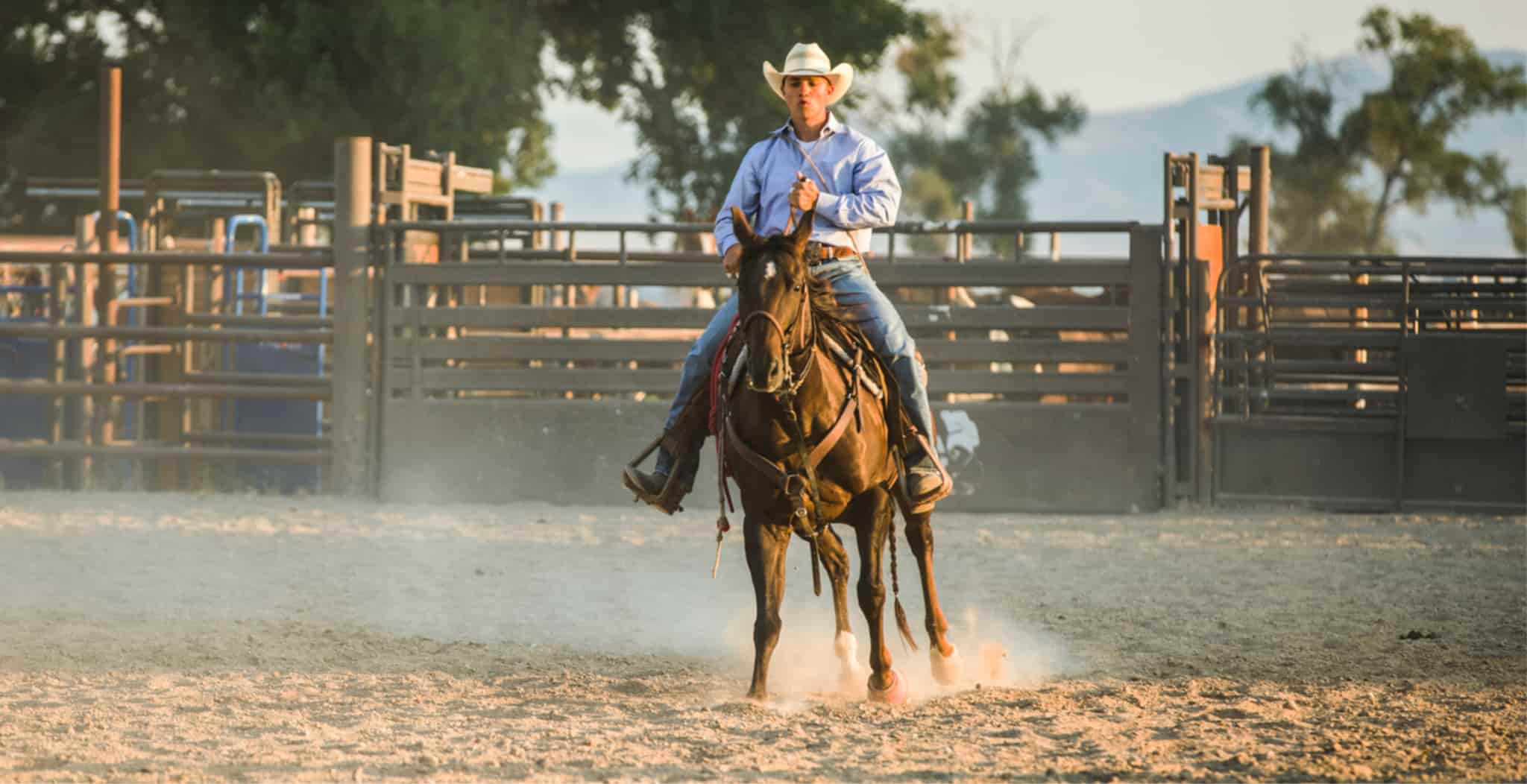In the vast expanse of Australia's countryside, amidst the rugged outback terrain, a unique equestrian discipline thrives: Campdrafting.
Rooted in tradition, steeped in skill, and embraced by communities across the Australian outback, Campdrafting is more than just a sport; it's a way of life.
As we delve into the essence of Campdrafting, this article will explore the disciplines rich history, unravel its intricacies, and draw parallels with the adrenaline-fuelled world of Rodeo sports such as Breakaway Roping or Barrel Racing which are popular equine sports in North America and Canada.
Understanding Campdrafting: A Tradition of Stockmen
Campdrafting traces its origins back to the late 19th century in Australia, where it emerged as a way for stockmen to showcase their horsemanship skills in handling cattle.
The rugged landscapes and vast pastoral properties within Australia provided the perfect backdrop for this quintessentially Australian sport. Initially, Campdrafting served as a practical exercise for cattle ranchers to test the agility, responsiveness, and instinctive abilities of their working stock horses in separating and controlling their cattle.
The essence of Campdrafting lies in its simplicity.
A single rider mounted on a skilled horse enters an enclosed arena, or "camp," where a group of cattle is released. The rider's objective is to select a steer from the herd and guide it through a series of manoeuvres within a designated time frame. These manoeuvres typically include drafting the steer around a set of markers, guiding it through a gate, and ultimately controlling its movement with precision and finesse.
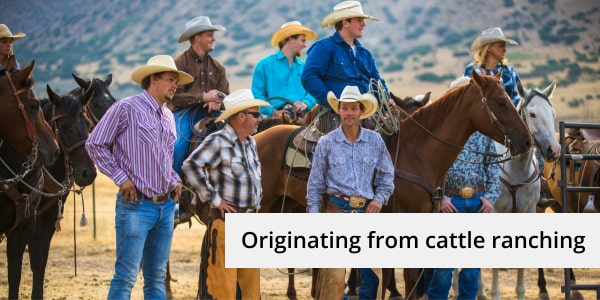
The Artistry of Campdrafting: Skill and Precision in Motion
At the heart of Campdrafting lies the intricate movements between the riders and their horse, where communication is conveyed through subtle cues and instinctual understanding. The rider's ability to anticipate the steer's movements, adjust their position accordingly, and maintain control amidst the chaos is a testament to the skill and harmony between the human and horse.
One of the defining features of Campdrafting is its emphasis on horsemanship. Riders must possess not only technical skill but also an innate understanding of equine behaviour. As with many equine disciplines including showjumping, dressage and 3-day eventing - the relationship between the rider and the horse is vital if they are to succeed within the sport. Equally, injuries in sports horses are more common due to the nature of their activities.
The horses themselves play a pivotal role, with breeds such as Australian Stock Horses and Quarter Horses revered for their agility, intelligence, and ‘cow sense’—their innate ability to anticipate and react to cattle movements.
As the steer is guided through the course, the rider must demonstrate mastery in the art of "cutting," where they strategically position themselves to anticipate the steer's movements and prevent it from returning to the safety of the herd. This requires split-second decision-making, lightning-fast reflexes, and a deep-seated connection between horse and rider.
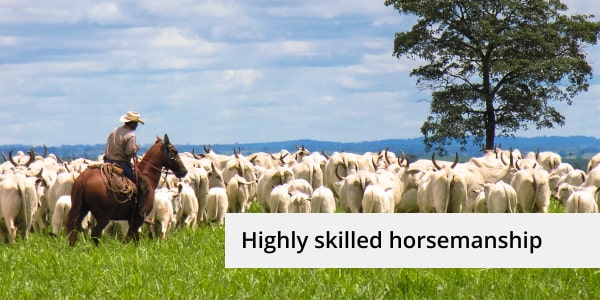
Parallels with Rodeo: Thrills, Challenges, and Community
While Campdrafting is distinctly Australian in its origins and execution, it shares striking similarities with Rodeo sports prevalent in North America and Canada. Both disciplines celebrate the heritage of the land, paying homage to the rugged spirit of the land and the enduring bond between humans and animals.
Like Campdrafting, Rodeo encompasses a diverse range of events that test the skills of both rider and animal. From bull riding and bronc riding to steer wrestling and barrel racing, Rodeo showcases the raw athleticism and courage of competitors as they navigate the challenges posed by powerful livestock.
One of the most significant parallels between Campdrafting and Rodeo lies in their communal nature. Both disciplines foster a sense of camaraderie and solidarity among participants, who come together to celebrate shared traditions and a mutual love for the sport. Rodeo arenas and Campdrafting camps alike serve as gathering places where families, friends, and spectators converge to witness feats of skill and bravery.
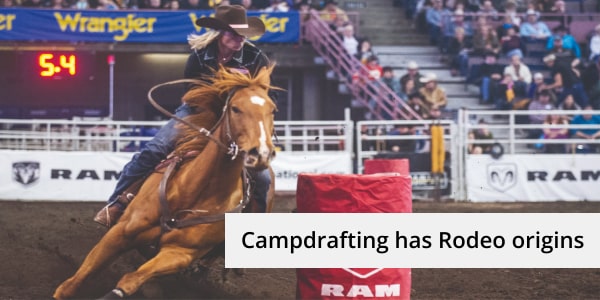
Challenges and Triumphs: The Grit of the Competitor
Beyond the glitz and glamour of the arena, both Campdrafting and Rodeo demand unwavering dedication, perseverance, and grit from their competitors. The life of a Campdrafting rider is marked by early mornings, long days in the saddle, and an unyielding commitment to honing their craft.
Similarly, Rodeo athletes endure gruelling training regimes, countless hours of practice, and the constant risk of injury as they strive for excellence in their respective events.
The pursuit of success in both disciplines is fraught with challenges, setbacks, and moments of triumph, each contributing to the experience that defines the sport.
Campdraft Competitions in Australia
There are a variety of competitions held across Australia every calendar year, from amateur events to highly paid professional competitions.
The Nutrien Classic Sale & Campdraft, an annual Performance Horse competition, has become the biggest of its kind in the southern hemisphere and is held at the Tamworth Showground in NSW with horses of 5 years old or over competing for a prize pot in excess of $350,000.
Willinga Park in NSW hold an annual Gold Buckle Championship with a prize pot in excess of $100,000. The World Championships are also held annually at the Sydney Royal Easter Show.
Alongside dedicated events Campdrafting can also be seen at many other events where multiple disciplines compete for prizes; such as the National Championship Show and demonstrations at events such as Equitana.
Breeds Commonly Used in Campdrafting
The quintessential horse for campdrafting is typically around 15 hands high, possessing the agility required to swiftly navigate the terrain and deftly manoeuvre around the arena. Beyond agility, the ideal horse must exhibit speed and control and possess the necessary body weight to exert pressure, particularly when engaging with larger cattle.
However, although agility-levels are paramount, the discipline requires high-speed sharp turns so also demands of the horses nimbleness over their sheer size. Indeed, a larger horse may find itself disadvantaged when negotiating the tight corners characteristic of campdrafting. Interestingly, the work requirements of a polo horse bear some resemblance to those of a campdrafting horse, highlighting the specialised nature of these equine sport horses.
A proficient campdrafting horse maintains an unwavering focus on the task at hand, never losing sight of its target amidst the chaos of the arena. Meanwhile, the rider must remain vigilant, ensuring stability in the saddle as the horse executes rapid turns and manoeuvres. Should the steer prove uncooperative, the horse may resort to "shouldering" (gently nudging the steer) into the desired position through strategic pressure.
Among the various breeds, the Australian Stock Horse reigns the supreme breed in the realm of campdrafting. These horses boast a lineage as diverse as the Australian landscape itself, with bloodlines tracing back to the earliest settlers. Formal recognition of the Australian Stock Horse as a distinct breed culminated in the establishment of the Australian Stock Horse Society in June 1971, marking a pivotal moment in the breed's history.
The significance of the Australian Stock Horse in campdrafting was further underscored by the landmark Landmark Classic Campdraft Sale in Tamworth on May 24, 2008. This inaugural sale showcased the cream of the crop, with 103 horses fetching an impressive $10,456 per horse. This event not only highlighted the enduring popularity of campdrafting but also served as a testament to the value placed on finely-tuned equine athletes within the community.
Common Equine Injuries Within Campdrafting
In the realm of equine health, injuries to campdraft horses predominantly afflict their joints, muscles and ligaments. The sports itself, being as high-paced as it is - leads to a variety of equine health conditions which can often be managed and prevented using a variety of treatments and therapies.
-
Joint Conditions:
These conditions, which can effect a variety of joints and lea dti multiple equine joint conditions, entail a reduction in the mobility of the joint or outright immobility due to either complete or partial fusion of the joints components. Regardless of the horse's age, this impediment to flexion and extension can be catastrophic, especially for horses engaged in strenuous work.
-
Osteoarthritis:
Marked by joint inflammation, osteoarthritis (horse arthritis) is a degenerative joint disease, in which the tissues in the joint break down over time. Osteoarthritis is a common condition found across all equine disciplines.
-
Osteoarthrosis:
Chronic joint inflammation accompanied by bone deformities characterises Osteoarthrosis, often stemming from inadequately treated injuries.
-
Osteophytes:
These are intra-articular deposits that proliferate within the joint, attributed to overexertion or excessive stress. These growths, sometimes reaching the size of a marble, can wreak havoc on cartilage, potentially resulting in restricted movement and severe lameness.
-
Osteochondrosis:
Typically afflicting major joints like the knee, osteochondrosis involves the erosion of articular cartilage, presenting as ulcers on its surface.
-
Muscle Inflammation:
Inflammation of muscles occurs when horses are subjected to excessive workloads, potentially leading to muscle fiber ruptures or strains. Common in the discipline due to the tight urns requited by the horse.
-
Hoof Injuries:
Often manifesting as a visible lameness and typically detectable within the first 72 hours of an injury - hoof injuries are common in Campdrafting horses. Often triggered by overexertion, uneven ground or unregulated exercise - it prompts horses to shift their weight to their hind limbs. Hoof injuries such Navicular can also be common within the discipline.
-
Tendon and Ligament Injuries
A variety oftendon and ligament injuries
occur within Campdrafting. As the sport demands so much from the animals, in turn injuries can occur.
-
Tendinitis
Inflammation of the horses tendons which usually appear after excessive exercise and is often associated with overextension and poor conditioning, fatigue, uneven ground conditions, and persistent training when inflammatory problems in the tendon already exist. Improper shoeing may also lead to tendinitis.
-
Demystis:
This refers to inflammation of ligaments, with suspensory ligaments being particularly susceptible to this condition.
The conditions above are similar to equine health issues seen in many other equine disciplines; as such there’re many treatments and options available to support the horse ongoing health. As well as injuries caused by the high-paced sport, horses competing in Australia Campdrafting will often have to travel long distances to compete.
Common Treatments For Horses Competing in Campdrafting
Magnetic therapy, such as EQU StreamZ bands, are a leading option in helping to maintain a healthy horse. Advanced magnetism creates no heat and thus allows the technology to support the horse 24x7 - when travelling to events, recovering after a competition and throughout their training programs. As no thermal reaction is created by advanced magnetism, the technology can support muscle and ligament injuries where normal traditional magnetism should be avoided.
Nutrition, as with any equine discipline, is incredibly important to your horses ongoing health. A well balanced diet is crucial to their health, providing them with the energy they need to train, compete and recover at the most optimum level. Many look at supplements to ensure their horses are receiving the adequate levels of nutrients and vitamins.
Routine dental and hoof care are vital, along with worming and vaccinations. Treatments such as hydrotherapy, Kinesiology and massage all provide horse owners with therapies which help promote recovery and ongoing flexibility.
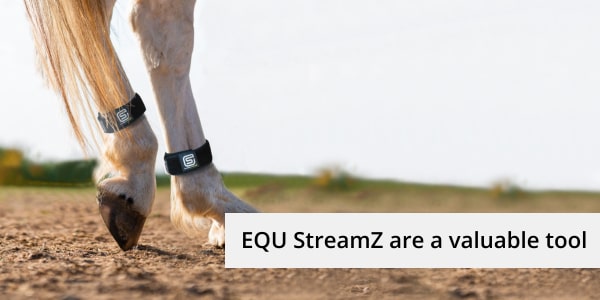
Preserving Tradition, Embracing Evolution
As Campdrafting and Rodeo continue to evolve in response to changing times and trends within society, there remains a steadfast commitment to preserving tradition and honouring the heritage upon which these disciplines were built.
While modern advancements in technology and equipment have undoubtedly influenced the way both sports are practiced and perceived, the core values of respect, sportsmanship, and camaraderie remain unchanged.
In conclusion, Campdrafting stands as a testament to the enduring spirit of the Australian outback, where tradition, skill, and community converge in a celebration of the bond between humans and horses.
Through its parallels with Rodeo sports in North America and Canada, Campdrafting serves as a reminder of the universal language spoken by those who share a passion for the equestrian arts—a language that transcends borders, cultures, and continents.
If you compete in Campdrafting then the ongoing health and wellbeing of your horse is paramount to them remaining sound and happy. Apply preventative measures to avoid injury and ensure the horse has plenty of time to rest and recuperate after each event.

